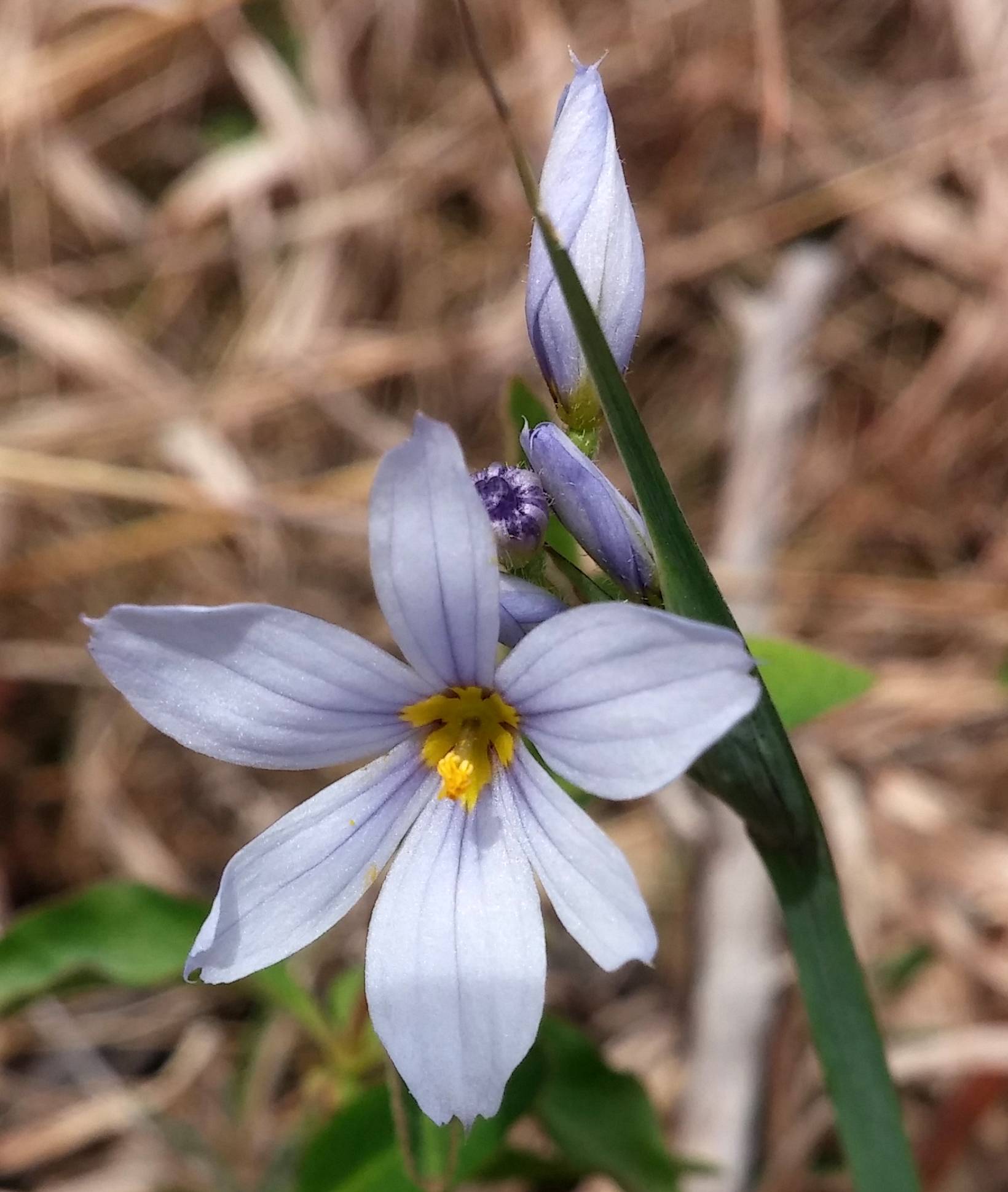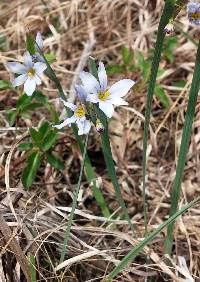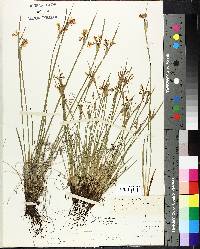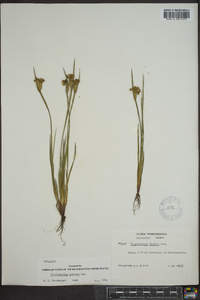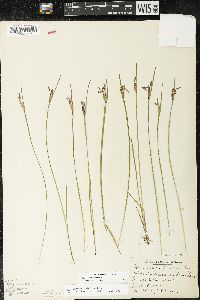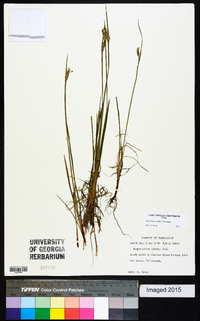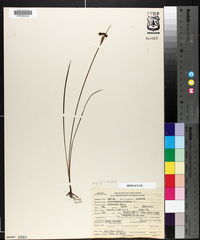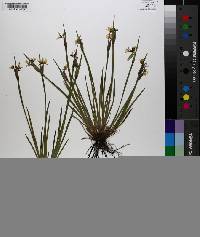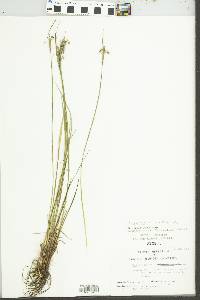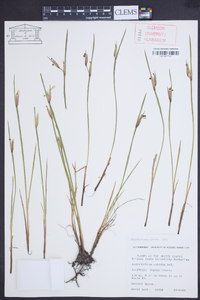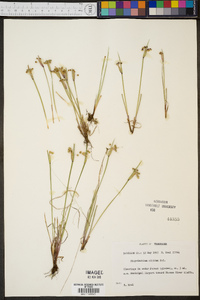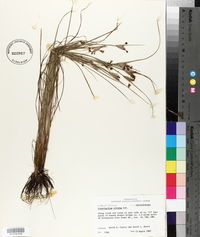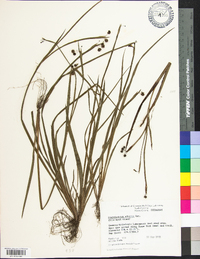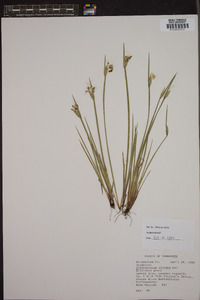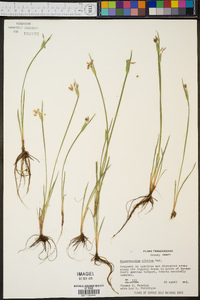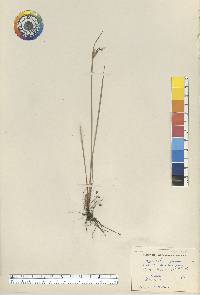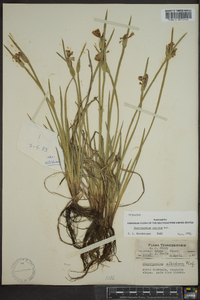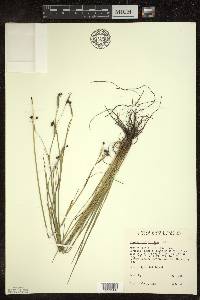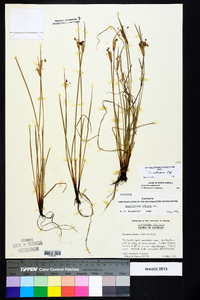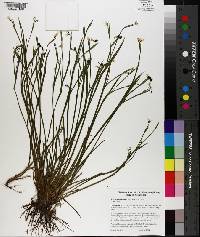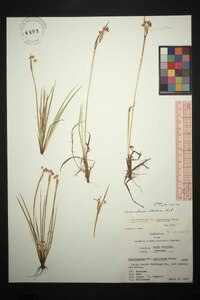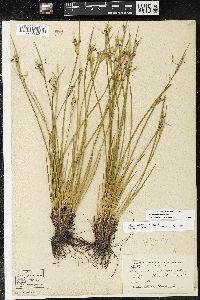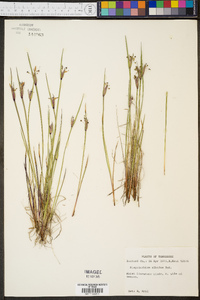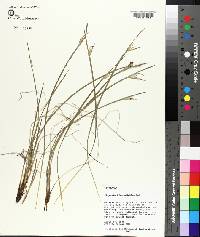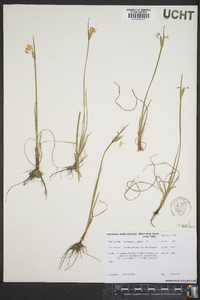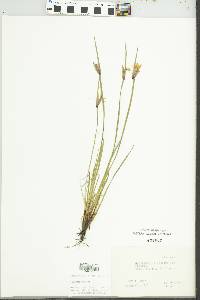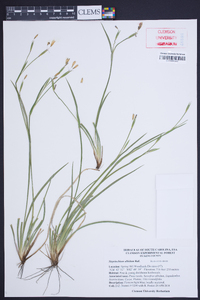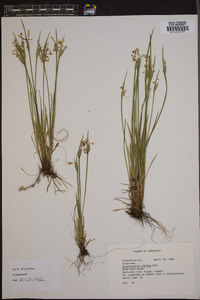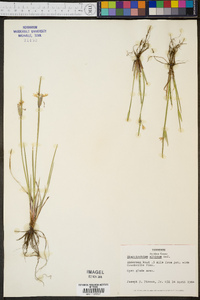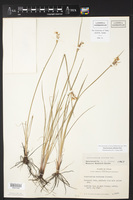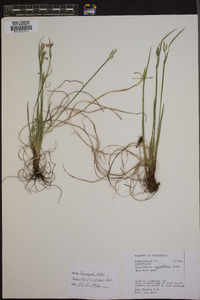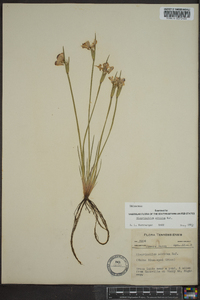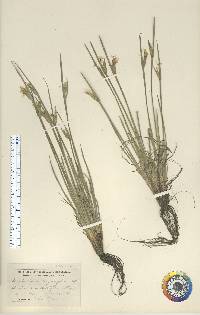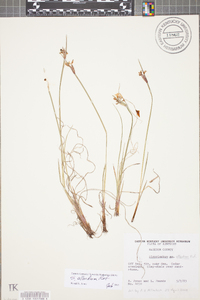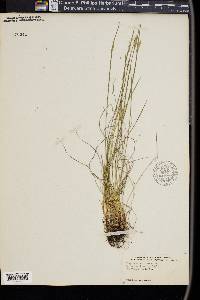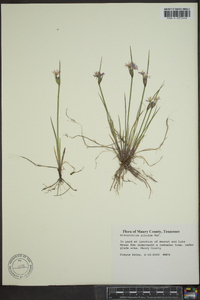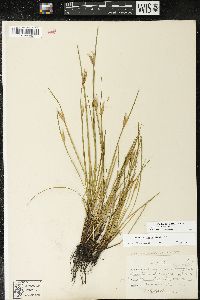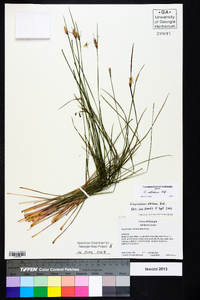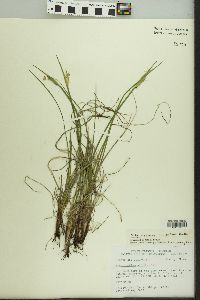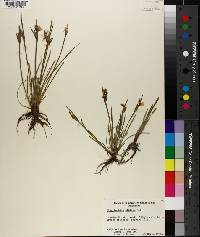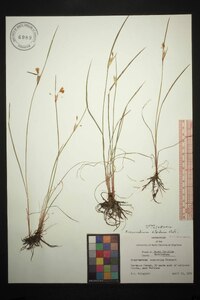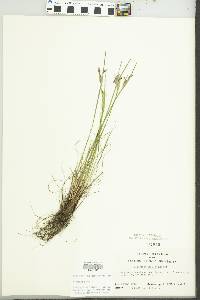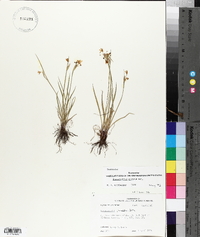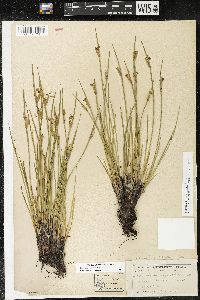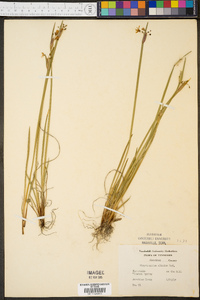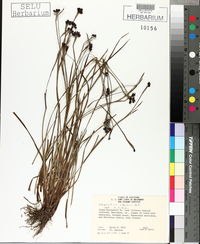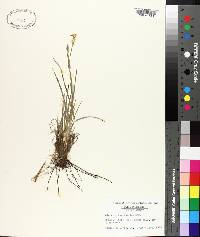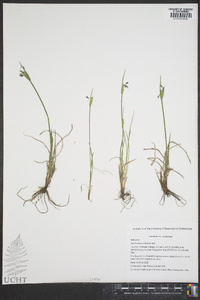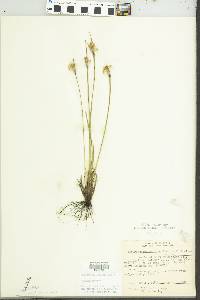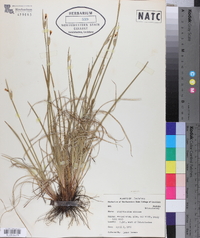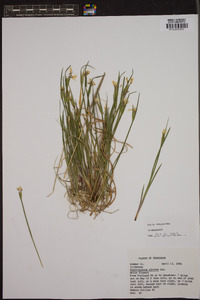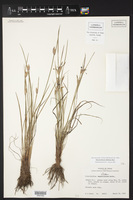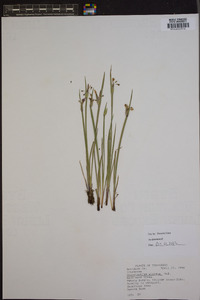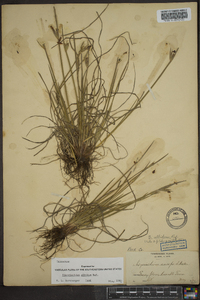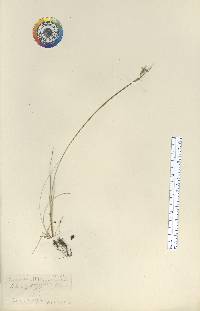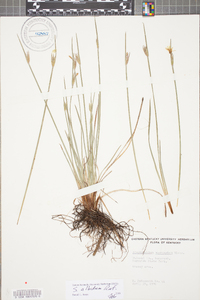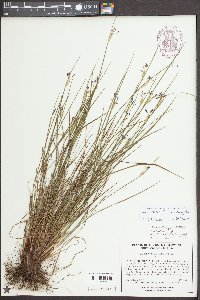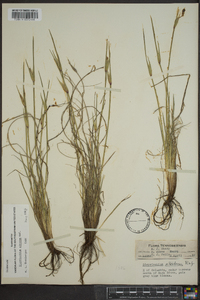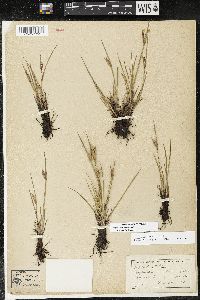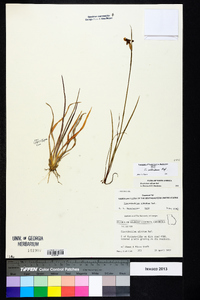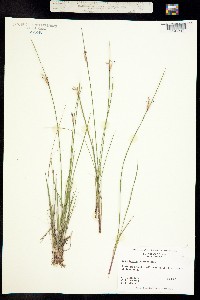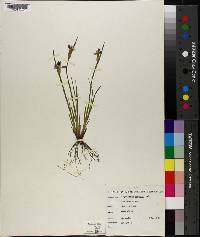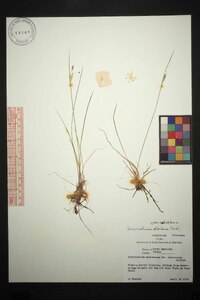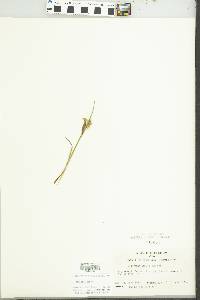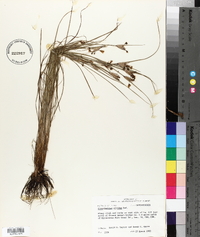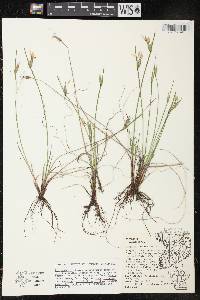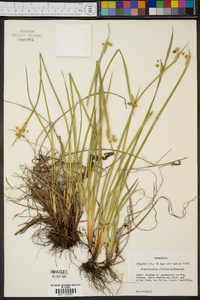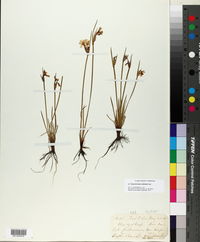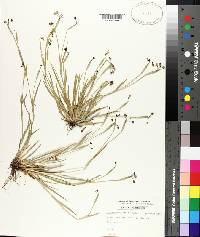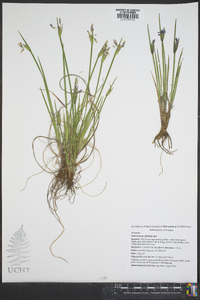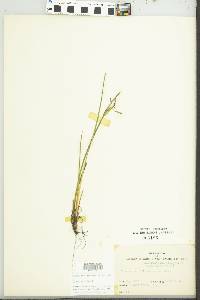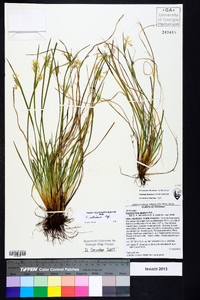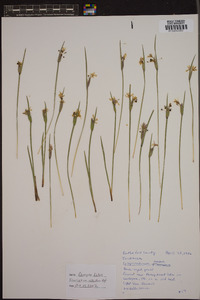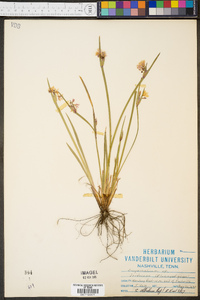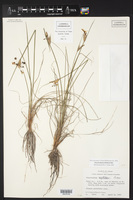Sisyrinchium albidum
|
|
|
|
Family: Iridaceae
white blue-eyed grass, more...White Blue-Eyed-Grass
|
Herbs, perennial, cespitose, yellowish green to light olive when dry, to 4 dm, not glaucous. Stems apparently simple, not wiry, obviously winged, 1.5-3.4 mm wide, glabrous to scabrous, margins entire to denticulate apically, similar in color and texture to stem body. Leaf blades usually glabrous, bases not persistent in fibrous tufts. Inflorescences paired, closely subtended by long, bractlike leaf that often obscures first (inner) inflorescence, sessile or occasionally second (outer) with branch to 5 mm; spathes green or occasionally with purplish tinge, glabrous or occasionally scabrous, keels usually denticulate; outer spathe of outer rhipidium 14-30 mm, 0.3-3.7 mm longer than inner, outer spathe of inner rhipidium 1-3.5 mm shorter than inner, both tapering evenly towards apex, margins distinct or rarely connate basally to 1 mm; inner with keel straight or somewhat curved, hyaline margins 0.1-0.5 mm wide, apex acute to obtuse or rarely truncate, ending 0.2-2.5 mm proximal to green apex. Flowers: tepals white or blue, bases yellow; outer tepals 6-12.5 mm, apex emarginate, aristate; filaments connate ± entirely, slightly stipitate-glandular basally; ovary similar in color to foliage. Capsules tan to light brown, ± globose, 2.8-4 mm; pedicel spreading or ascending. Seeds globose to obconic, lacking obvious depression, 0.8-1.1 mm, granular to rugulose. 2n = 32. Flowering spring--early summer. Roadsides and open slopes, prairies, or rich open woods, often on shallow rocky or sandy soil; 0--600 m; Ont.; Ala., Ark., Fla., Ga., Ill., Ind., Ky., La., Maine, Mich., Miss., Mo., N.Y., N.C., Ohio, Okla., Pa., S.C., Tenn., Tex., Va., Wis. Erect, 1-4 dm, pale green and somewhat glaucous, drying pale; stems 1.5-4 mm wide, distinctly winged; lvs about as wide as the stems; spathes mostly paired at the top of the simple stem, the lower (outer) one with a foliaceous outer bract commonly 3.5-7 cm, the other bracts shorter, 1.5-2.5 cm, often purplish-tinged; tep 8-12 mm, white to violet, fr 2-4 mm; 2n=32, 64. Prairies, meadows, grassy or sandy places, and open woods; N.Y. to N.D., s. to Ga. and Okla. Gleason, Henry A. & Cronquist, Arthur J. 1991. Manual of vascular plants of northeastern United States and adjacent Canada. lxxv + 910 pp. ©The New York Botanical Garden. All rights reserved. Used by permission. From Flora of Indiana (1940) by Charles C. Deam This species prefers a moist or dry, sandy soil. It is infrequent on sandy, white and black oak ridges and most frequent and abundant in moist, sandy soil of prairie habitats. It is also sometimes found in marshes. It is infrequent throughout the lake area, probably absent or rare in some of the counties of the Tipton Till Plain, and again appears sparingly in the southern counties. Most of our species seem to thrive best in full sunshine and are usually found in slightly acid soil. Most of our reports of Sisyrinchium angustifolium which were made before 1908 should, no doubt, be referred to this species. …… Indiana Coefficient of Conservatism: C = 4 Wetland Indicator Status: FACU |

